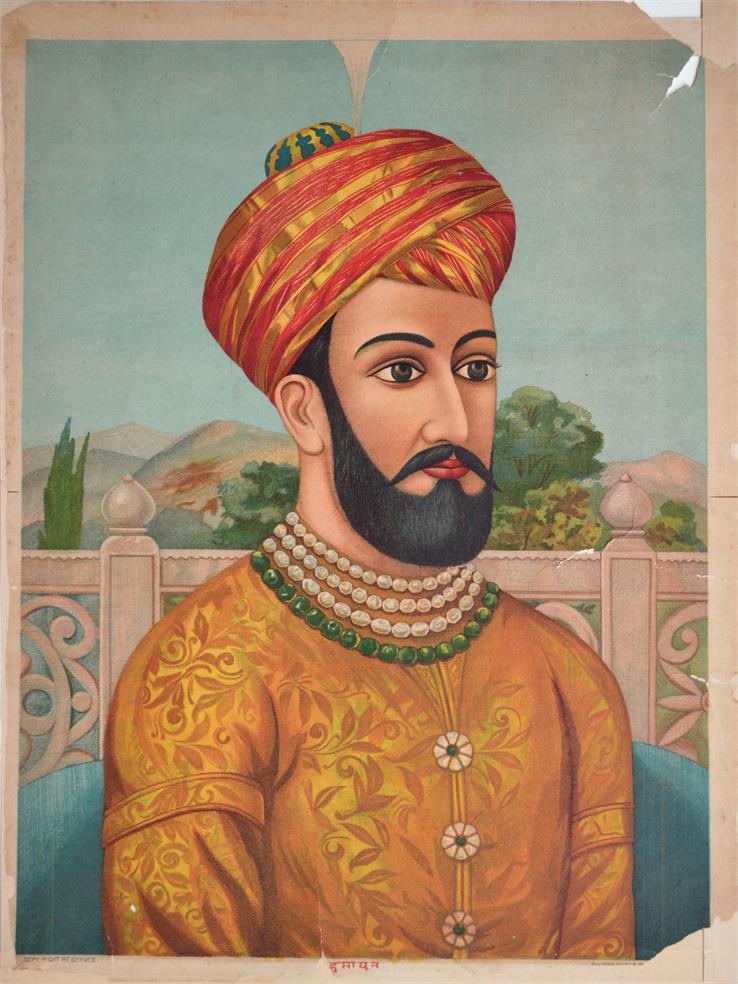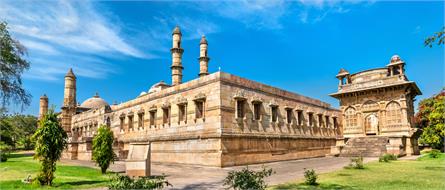Humayun's Tomb: The Historic Mughal Architecture

Humayun's Tomb, in the the Nizamuddin East area of Delhi, India, is a remarkable architectural masterpiece that has captured the hearts and minds of people around the world. This historic site is renowned for its exceptional architectural beauty and historical significance, earning it a coveted spot on the UNESCO World Heritage list. Specifically, it stands in close proximity to the Nizamuddin Dargah, a revered Sufi shrine, and is surrounded by lush gardens. The tomb complex is easily accessible, and situated in the southeastern part of the city, making it a popular tourist destination.
Also Read: Delhi The Heart of India
History of Humayun's Tomb | Foundation | Preservation of Legacy by Humayun’s Wife Bega Begum
The history of Humayun's Tomb is deeply intertwined with the Mughal Empire, one of the most influential and powerful dynasties in Indian history. The Mughal Empire was founded by Babur in 1526, and it reached its zenith under the rule of Akbar the Great. Humayun, the son of Babur, ascended to the throne in 1530 but faced several challenges during his reign, including conflicts with Afghan chieftains and the loss of the empire to Sher Shah Suri. However, with the support of Persian Safavid rulers, Humayun managed to regain his empire in 1555, just a year before his untimely death.
Humayun's widow, Empress Bega Begum, also known as Haji Begum, played a crucial role in the tomb's history. She was deeply committed to preserving her husband's legacy and began constructing his tomb shortly after his death. The construction began in 1565, and it took eight years to complete. The chief architect of the tomb was Mirak Mirza Ghiyas, a Persian architect who brought the finest elements of Persian and Indian architectural styles to create this magnificent monument.
Also Read: The wonderful places to visit in Himachal Pradesh
Architectural Features of Humayun's Tomb
Humayun's Tomb is celebrated for its stunning architecture, which combines elements of Persian and Indian styles, setting the stage for the development of the iconic Mughal architectural style. The tomb complex covers a vast area and includes several key features:
1. Main Tomb
The central structure is a massive mausoleum built primarily with red sandstone and white marble. Its symmetrical design includes a central dome surrounded by four smaller domes, creating a visually appealing and harmonious structure.
2. Char Bagh Garden
The tomb is situated in the center of a char bagh (four-part) garden, a traditional Persian-style garden divided into quadrants by pathways and water channels. The garden is meticulously landscaped with lush greenery, reflecting pools, and fountains, providing an oasis of serenity in the bustling city.
3. Gateways and Entry Points
The tomb complex features grand entrance gateways on the south and west sides. The southern gateway, known as the Bu Halima Gateway, leads to the main tomb through a series of terraced platforms. The western gateway, known as the Bara Gateway, serves as the primary entrance for visitors.
4. Octagonal Mughal Chhatri
At the center of the garden, there is an elegant octagonal chhatri (canopy) made of white marble. This chhatri serves as a symbol of the architectural finesse of the Mughal era.
5. Other Structures
The tomb complex also includes several smaller tombs and structures, such as the tomb of Isa Khan Niazi, a noble in Akbar's court, and Arab Serai, a lodging place for travelers.
Also Read: The Historic Agra Fort
Cultural Significance of Humayun’s Tomb
Humayun's Tomb holds immense cultural significance for several reasons:
1. Architectural Innovation
It is considered a pioneer in Mughal architecture and a precursor to the grand Taj Mahal. The fusion of Persian and Indian architectural styles showcased in Humayun's Tomb set the stage for the development of the distinctive Mughal architectural tradition characterized by intricate marble work, elegant domes, and elaborate gardens.
2. Historical Legacy
The tomb is a testament to the enduring love and devotion of Empress Bega Begum for her husband, Humayun. It stands as a symbol of her commitment to preserving his memory and ensuring his place in history.
3. UNESCO World Heritage Site
In 1993, Humayun's Tomb was designated as a UNESCO World Heritage Site, a recognition of its outstanding cultural and historical significance. UNESCO noted that the tomb "is the first garden-tomb on the Indian subcontinent" and praised its "inspired" architecture and layout.
4. Tourist Attraction
Humayun's Tomb is one of Delhi's top tourist attractions, drawing visitors from around the world who come to admire its beauty, learn about Mughal history, and experience the tranquility of its gardens.
Also Read: National Parks of India
UNESCO World Heritage Designation
The inclusion of Humayun's Tomb on the UNESCO World Heritage List is the result of a careful evaluation of its cultural and historical value. The UNESCO World Heritage Committee recognized several key factors that contribute to its significance:
1. Brilliance of Architechture
The tomb is an exceptional example of Mughal architecture, representing a unique blend of Persian and Indian styles. Its architectural innovations, such as the use of red sandstone and white marble, the char bagh garden layout, and the placement of the tomb at the center of the garden, have left an indelible mark on the development of Indian architectural heritage.
2. Historical Relation With Mughal Empire
Humayun's Tomb is intimately linked to the history of the Mughal Empire, showcasing the dynasty's rise and the efforts to preserve its legacy. The tomb's construction by Empress Bega Begum serves as a poignant testament to her love for Humayun and her dedication to commemorating his memory.
3. Influence of culture
The tomb's architectural style and layout have had a profound impact on subsequent Mughal constructions, including the world-famous Taj Mahal. It exemplifies the Mughal rulers' commitment to creating grand structures that reflect their power and patronage of the arts.
4. Design of garden
The char bagh garden surrounding the tomb is an exceptional example of the Persian-style garden layout. Its meticulous planning, use of water features, and ornamental elements make it a cultural treasure in its own right.
5. Efforts for conservation
UNESCO also recognized the efforts made by the Indian government to restore and preserve Humayun's Tomb and its surrounding gardens. These conservation initiatives ensure that this historical monument continues to inspire and educate future generations.
Also Read: Jharkhand The Land of Forests
Humayun's Tomb, with its captivating architecture, rich history, and cultural significance, stands as evidence of the grandeur of the Mughal Empire and the enduring legacy of Empress Bega Begum's love for her husband. Its inclusion on the UNESCO World Heritage List shows its global importance as a cultural and historical treasure. Today, the tomb continues to draw visitors and scholars alike, offering a glimpse into the magnificent architectural and artistic achievements of the Mughal era. As it has for centuries, Humayun's Tomb continues to inspire awe and admiration, reminding us of the enduring power of human creativity and dedication to preserving our heritage.










